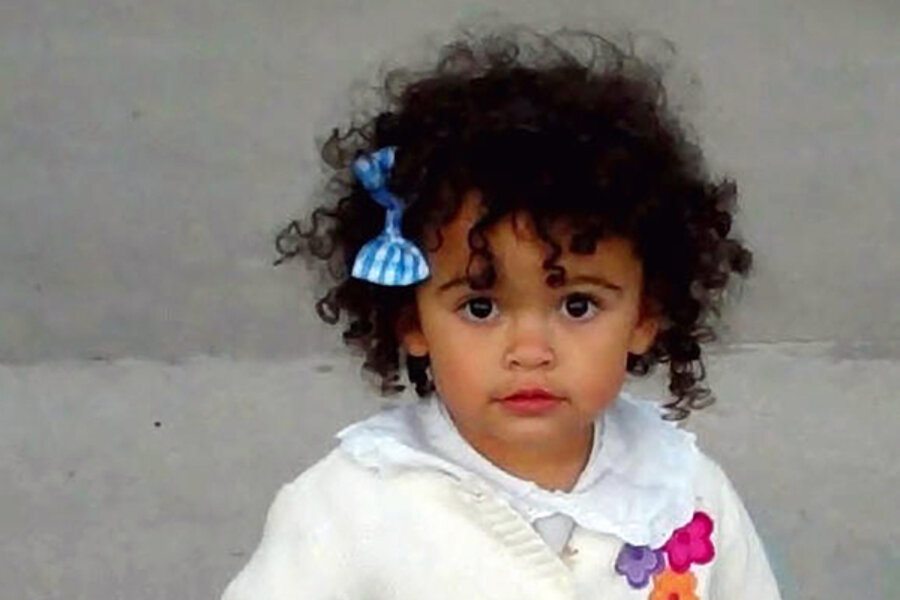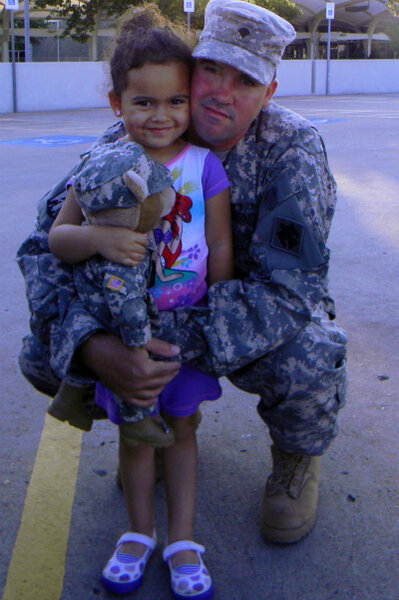Supreme Court: 'Baby Veronica' to return to adoptive parents
The US Supreme on Friday refused to re-engage in a heart-wrenching dispute over who should gain permanent custody of a three-year-old child known in court papers as Baby Veronica – her biological father or the adoptive couple selected by the birth mother.
The high court’s refusal to take up the case opens the way for the girl’s transfer from her father in Oklahoma to the adoptive couple in South Carolina.
A South Carolina family court judge finalized the adoption on Wednesday and approved a proposed transition procedure designed to reduce any trauma to the child of being uprooted and sent to live with a new family.
Initially, the South Carolina courts had ruled in favor of the father in the custody dispute, citing a federal law, the Indian Child Welfare Act, that makes it difficult for non-Native Americans to adopt a child of Indian ancestry.
The biological father, Dusten Brown, is a member of the Cherokee Nation, and his lawyers argued that Veronica could not be taken from him under the Indian Child Welfare Act.
The issue went to the US Supreme Court, which ruled 5 to 4 in late June that the father could not rely on the federal law to block the adoption.
The court noted that Mr. Brown had refused to provide financial assistance to the Veronica’s mother and had signed away his parental rights. He did not show an interest in raising the child until he learned, after the fact, that the birth mother had placed Veronica for adoption.
At that point, he moved to block the adoption and care for the child himself.
After the Supreme Court ruled on June 25, the custody dispute was remanded to the South Carolina Supreme Court, which ruled in mid-July in favor of the adoptive couple.
The case is complicated by the fact that Veronica lived the first two years of her life with the adoptive couple, Matt and Melanie Capobianco of Charleston, S.C.
But then, as a result of a family court ruling, Veronica was transferred to Oklahoma to live with her father and her paternal grandparents. She has lived with them for the past year and a half.
The question raised by the father and his lawyers at the US Supreme Court was whether the South Carolina Supreme Court should have conducted an in-depth hearing to determine the child’s best interests as they exist today, given that she is now almost four years old and has lived the most recent half of her life with her father and his family.
In reaching its decision that Veronica should live with the Capobianos, the South Carolina Supreme Court said it had determined the girl’s best interests based on a review of the existing court record. That record was compiled a year and a half ago.
The US Supreme Court decision not to take up the case came in a three-sentence order. It noted that two justices, Ruth Bader Ginsburg and Sonia Sotomayor would have granted a stay in the case and heard the father’s arguments.
During oral argument in the case in April, Justice Ginsburg repeatedly inquired about the emotional impact on the young girl of any potential transfer of custody from the father to the adoptive couple.
Details of the transfer plan approved by the family court judge in South Carolina remain confidential.
Brown said in a statement that the transfer plan anticipated that Veronica would be “fearful, scared, anxious, confused” and would likely cry herself to sleep for a period of time. It also anticipated that she may feel she’d been rejected by her father and grandparents.
“I will not voluntarily let my child go through that, no parent would,” Brown said in a statement quoted by the Associated Press. “I am her father and it is my job to protect her.”
In the weeks since the Supreme Court decision, Veronica’s grandparents and members of the Cherokee Nation have filed separate lawsuits seeking to retain custody of the child in Oklahoma. It is unclear how the conflicting litigation will be resolved.
This latest motion to the US Supreme Court was called Birth Father v. Adoptive Couple (13A115).






